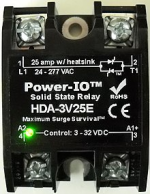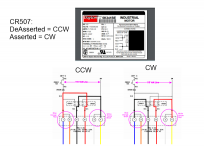TwoBlocked
Senior Member
- Location
- Bradford County, PA
- Occupation
- Industrial Electrician
You would have to switch T1&T3 to 2W and T2&T4 to 512 while leaving T5&T8 where they are. You would be switching the continuously powered run windings instead of the intermittently powered start windings. If all the terminals are switched, the motor does not reverse, you know?Sorry, I keep looking at that schematic as a ladder diagram. it's not.
Well, no. Not if the (switched) incoming 120V line was connected neutral to 4 and hot to 3.
-Hal




